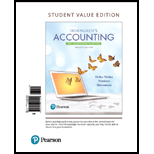
Return on investment is a profitability ratio that represents the percentage return on the investment made. It is calculated by dividing the Net Income by the Average total assets. The formulas to calculate the ROI are as follows:
Profit Margin Ratio:
Profit Margin Ratio is a profitability ratio that represents the percentage income earned on the sales. It is calculated by dividing the Net Income by the Sales. The formulas to calculate the Profit margin is as follows:
Asset Turnover Ratio:
Asset Turnover Ratio is an efficiency ratio that represents the sales earned on the average assets invested in the business. It is calculated by dividing the Sales by Average total assets. The formulas to calculate the Asset Turnover Ratio is as follows:
Residual Income (RI):
Residual Income is the income earned over and above the expected
1. Return on Investment (ROI):
To determine: The Return on Investment (ROI)
2. Profit Margin Ratio:
To determine: The Profit Margin Ratio
3. Asset Turnover Ratio:
To determine: The Asset Turnover Ratio
4. Expanded ROI:
To determine: Expanded ROI
5. Residual Income (RI):
To determine: The Residual Income (RI)
Want to see the full answer?
Check out a sample textbook solution
Chapter 24 Solutions
Horngren's Accounting: The Managerial Chapters, Student Value Edition (12th Edition)
- Can you explain the correct methodology to solve this general accounting problem?arrow_forwardI need help solving this financial accounting question with the proper methodology.arrow_forwardPlease provide the correct answer to this general accounting problem using accurate calculations.arrow_forward
- I need help with this financial accounting problem using accurate calculation methods.arrow_forwardPlease explain the solution to this general accounting problem with accurate principles.arrow_forwardPlease provide the answer to this general accounting question using the right approach.arrow_forward
- Can you provide the valid approach to solving this financial accounting question with suitable standards?arrow_forwardDavis Industries' manufacturing overhead includes $8.20 per machine hour for variable manufacturing overhead and $186,000 per period for fixed manufacturing overhead. What is the predetermined overhead rate for the denominator level of activity of 5,200 machine hours?arrow_forwardCan you solve this general accounting problem with appropriate steps and explanations?arrow_forward
- I need help with this general accounting question using standard accounting techniques.arrow_forwardI am trying to find the accurate solution to this general accounting problem with the correct explanation.arrow_forwardPlease explain the solution to this general accounting problem with accurate explanations.arrow_forward

 AccountingAccountingISBN:9781337272094Author:WARREN, Carl S., Reeve, James M., Duchac, Jonathan E.Publisher:Cengage Learning,
AccountingAccountingISBN:9781337272094Author:WARREN, Carl S., Reeve, James M., Duchac, Jonathan E.Publisher:Cengage Learning, Accounting Information SystemsAccountingISBN:9781337619202Author:Hall, James A.Publisher:Cengage Learning,
Accounting Information SystemsAccountingISBN:9781337619202Author:Hall, James A.Publisher:Cengage Learning, Horngren's Cost Accounting: A Managerial Emphasis...AccountingISBN:9780134475585Author:Srikant M. Datar, Madhav V. RajanPublisher:PEARSON
Horngren's Cost Accounting: A Managerial Emphasis...AccountingISBN:9780134475585Author:Srikant M. Datar, Madhav V. RajanPublisher:PEARSON Intermediate AccountingAccountingISBN:9781259722660Author:J. David Spiceland, Mark W. Nelson, Wayne M ThomasPublisher:McGraw-Hill Education
Intermediate AccountingAccountingISBN:9781259722660Author:J. David Spiceland, Mark W. Nelson, Wayne M ThomasPublisher:McGraw-Hill Education Financial and Managerial AccountingAccountingISBN:9781259726705Author:John J Wild, Ken W. Shaw, Barbara Chiappetta Fundamental Accounting PrinciplesPublisher:McGraw-Hill Education
Financial and Managerial AccountingAccountingISBN:9781259726705Author:John J Wild, Ken W. Shaw, Barbara Chiappetta Fundamental Accounting PrinciplesPublisher:McGraw-Hill Education





